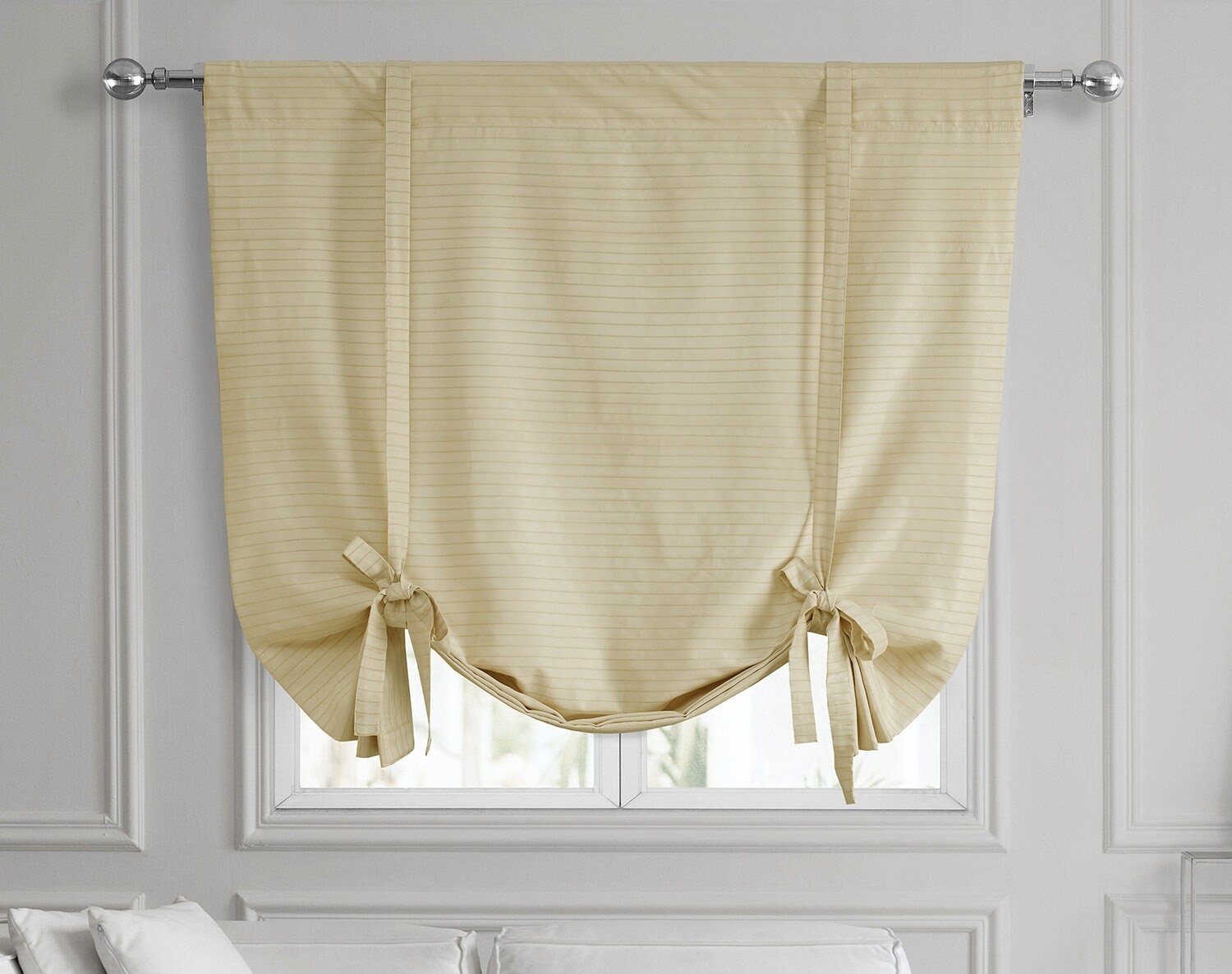

Articles
How To Tie Up Curtains
Modified: December 7, 2023
Learn how to tie up curtains with these informative articles. Discover different techniques and get step-by-step instructions for achieving the perfect curtain tie-up.
(Many of the links in this article redirect to a specific reviewed product. Your purchase of these products through affiliate links helps to generate commission for Storables.com, at no extra cost. Learn more)
Introduction
When it comes to dressing up your windows, curtains are a versatile and stylish choice. They not only add privacy and control the amount of natural light entering your space, but they also contribute to the overall aesthetics of your room. One way to elevate the look of your curtains is by tying them up, creating an elegant and decorative effect.
Tying up curtains is a great way to showcase any beautiful patterns, textures, or trims while also allowing more light to filter into your space. Additionally, it can help create a more open and airy feel to your room. Whether you want to add a touch of elegance to your living room or create a cozy atmosphere in your bedroom, learning how to tie up curtains is a valuable skill to have.
This step-by-step guide will walk you through the process of tying up curtains, from choosing the right curtains to achieving your desired look. So, let’s get started and transform your windows into beautiful focal points in your home!
Key Takeaways:
- Elevate your space by tying up curtains to showcase patterns, textures, and trims while creating an open and airy feel. Choose the right curtains, measure, gather materials, and style for a personalized look.
- Master the art of tying up curtains to transform your windows into beautiful focal points. Experiment with different tying methods and decorative elements to reflect your personal style and enhance your space’s ambiance.
Read more: How To Tie Long Curtains
Step 1: Choose the right curtains
Before you can tie up your curtains, it’s essential to choose the right ones for the desired effect. The type of fabric, color, and pattern will greatly influence the overall look and feel of your space. Here are a few things to consider when selecting curtains:
- Fabric: Opt for curtains made from lightweight fabrics like sheer or chiffon materials if you want a soft and flowy look. If you desire a more formal or dramatic appearance, consider heavier fabrics like velvet or brocade.
- Color: Think about the color scheme and ambiance of your room. Choose curtains that either complement or contrast with your existing décor. Neutral colors like white, beige, or gray can create a timeless and versatile look, while bolder colors can add a pop of personality.
- Pattern: If you want to make a statement, consider curtains with patterns like stripes, florals, or geometric designs. Keep in mind the size of the pattern and how it will fit in with the overall aesthetic of your room.
- Length: Decide if you prefer curtains that hang all the way to the floor or ones that stop at the window ledge. Floor-length curtains can create an elegant and formal look, while shorter curtains can add a casual and relaxed vibe.
By carefully selecting the right curtains, you can set the foundation for successfully tying them up to achieve your desired style. Take your time to explore different options and consider how they will complement your space. Once you have chosen the perfect curtains, you’re ready to move on to the next step!
Step 2: Measure and prepare
Before you can start tying up your curtains, it’s important to accurately measure your windows and prepare the necessary tools. Here’s what you need to do:
- Measurements: Measure the width and height of your windows to determine the size of the curtains you’ll need. Be sure to add a few extra inches to the width to allow for proper fullness. If you already have curtains, measure their length to use as reference for the tied-up length.
- Tools: Prepare the tools you’ll need, such as a measuring tape, curtain rod, curtain hooks or rings, and any additional hardware for installation. Make sure the curtain rod is strong enough to support the weight of the curtains and consider the style and material that will best complement your curtains.
- Clear the area: Before you start hanging your curtains, clear the area around the windows to make the process easier. Remove any furniture or obstacles that may hinder the installation or cause damage to the curtains.
- Clean the curtains: If you’re using existing curtains, give them a thorough cleaning before tying them up. This will ensure they look fresh and pristine in their new position.
By taking accurate measurements and preparing the necessary tools and space, you’ll be setting yourself up for success when it comes time to tie up your curtains. So, grab your measuring tape and get ready for the next step!
Step 3: Gather the necessary materials
Before you can begin tying up your curtains, it’s important to gather all the necessary materials to ensure a smooth and successful process. Here’s a list of the materials you’ll need:
- Curtains: Choose the curtains that you’ve selected in Step 1. Make sure they are the right length and width to fit your windows.
- Curtain hooks or rings: Depending on your curtain rod and desired style, you may need curtain hooks or rings to attach the curtains to the rod. These can help create a neat and organized look.
- Curtain rod: Select a curtain rod that matches your desired style and supports the weight of your curtains. Make sure to choose an appropriate length for your windows.
- Hardware: Depending on the type of curtains and windows, you may need additional hardware such as brackets, screws, or anchors to securely install the curtain rod.
- Additional accessories: Consider any additional accessories you may want to use to enhance the look of your tied-up curtains, such as decorative tiebacks, tassels, or ribbons.
By gathering all the necessary materials beforehand, you’ll have everything you need to complete the tying up process without any interruptions or delays. Double-check that you have all the required items and make any additional purchases if needed. Once you have everything ready, move on to the next step to start tying up your curtains.
Step 4: Determine the curtain length
Before you can start tying up your curtains, it’s important to determine the desired length for the tied-up style. Here’s how you can do it:
- Consider the functionality: Think about the purpose of your curtains and how they will be used. If you need privacy or light control, you may want to keep the curtains at a longer length that covers the entire window. However, if you simply want to add a decorative touch or allow more light into the room, a shorter length may be more suitable.
- Experiment with different lengths: Try out different lengths by temporarily tying up your curtains at various heights using clips or fabric ties. Step back and observe the effect to see what works best with your room’s aesthetic and desired look.
- Consider the surroundings: Take into account any furniture or architectural features near your windows. You may want to adjust the curtain length to ensure it doesn’t interfere with any objects or obstruct the view.
- Aim for balance: Achieving a visually pleasing balance is key. Consider the proportions of the room and the placement of other elements, such as furniture or wall art, when determining the curtain length. You want the tied-up curtains to complement the overall harmony of the space.
By taking the time to determine the perfect length for your tied-up curtains, you’ll be able to create a stylish and visually appealing look for your windows. Keep experimenting and adjusting until you find the length that perfectly suits your preferences and room’s aesthetics. Once you’ve decided on the curtain length, you’re ready to move on to the next step of attaching the curtain hooks or rings.
Read more: How To Tie Back Curtains
Step 5: Attach curtain hooks or rings
Now that you have determined the desired length for your tied-up curtains, it’s time to attach the curtain hooks or rings. Follow these steps to ensure they are securely in place:
- Choose the appropriate hardware: Depending on your curtain rod and preference, decide whether you will use curtain hooks or rings. Curtain hooks are typically used for curtains with pinch pleats, while rings are suitable for curtains with rod pockets or grommets.
- Position the hooks or rings: Start by positioning the hooks or rings evenly across the top edge of the curtains. If using hooks, insert the pointed ends into the fabric at the top of each pleat. If using rings, thread them onto the curtain rod.
- Secure the hooks or rings: Ensure that the hooks or rings are securely attached to the curtains. Give them a gentle tug to make sure they are firmly in place and won’t come off when you tie up the curtains.
- Adjust as needed: Step back and check the overall appearance of the curtains to ensure they are hanging evenly and smoothly. Make any adjustments to the positioning of the hooks or rings if necessary.
Attaching the curtain hooks or rings correctly is crucial as they provide stability and support when tying up the curtains. Take your time and double-check that they are firmly attached before proceeding to the next step. Once you are satisfied with the placement of the hooks or rings, you can move on to hanging the curtain rod.
When tying up curtains, use a decorative rope or ribbon to create a stylish and functional tieback. This can add a touch of elegance to your window treatment.
Step 6: Hang the curtain rod
Now that you have prepared the curtains and attached the hooks or rings, it’s time to hang the curtain rod. Follow these steps to ensure a secure and proper installation:
- Choose the right location: Determine the ideal placement for your curtain rod. It should be positioned slightly above and wider than the window frame to allow the curtains to cover the entire window when untied.
- Mark the placement: Use a pencil to make light marks on the wall or window frame where the brackets will be installed. Ensure that the markings are level and evenly spaced.
- Install the brackets: Line up the brackets with the marked positions and use a drill or screwdriver to secure them to the wall. Make sure the brackets are level and properly aligned.
- Insert the curtain rod: Slide the curtain rod through the rings or hooks, and then place the ends of the rod onto the brackets. Ensure that the rod is properly seated and supported by the brackets.
- Test the stability: Gently tug on the curtain rod to ensure that it is securely in place and can support the weight of the curtains. Make any necessary adjustments to the brackets or rod if needed to ensure stability.
Hanging the curtain rod correctly is essential to provide a sturdy foundation for the tied-up curtains. Take your time to ensure that the measurements are accurate, the brackets are securely installed, and the rod is properly aligned. Once the curtain rod is installed, you can move on to adjusting the curtain length and tying up the curtains in the next steps.
Step 7: Adjust the curtain length
Now that you have hung the curtain rod, it’s time to adjust the length of the curtains to achieve the desired look. Follow these steps to properly adjust the curtain length:
- Step back and observe: Take a step back and evaluate the overall appearance of the curtains. Look for any areas that may be too long or too short, and assess how the curtains flow and drape.
- Even out the length: If the curtains are uneven or have excess fabric, gently pull them to the desired length. Ensure that both sides are equal in length and hang evenly.
- Consider the tied-up position: Visualize how you want the curtains to look when they are tied up. Keep in mind the style you want to achieve and adjust the length accordingly.
- Use fabric ties or clips: To temporarily hold the curtains in the adjusted length, you can use fabric ties or clips. Simply gather the excess fabric and secure it with a tie or clip for a neat and tidy appearance.
- Step back and reassess: After making the adjustments and securing the tied-up position, step back again and evaluate the overall effect. Make any final tweaks if necessary to achieve the desired curtain length and appearance.
By taking the time to adjust the curtain length, you can ensure a polished and visually pleasing result when the curtains are tied up. Pay attention to detail, keep the overall style in mind, and make any necessary changes until you achieve the desired look. Once you’re satisfied with the adjusted length, you’re ready to move on to the next step of tying up the curtains.
Step 8: Tie up the curtains
Now that you have adjusted the length of the curtains, it’s time to tie them up to create an elegant and decorative effect. Follow these steps to properly tie up your curtains:
- Choose the tying method: There are various methods you can use to tie up your curtains, depending on the desired look and style. Some popular options include the classic tie-back, the single knot, the draped swag, or using decorative holdbacks or tassels.
- Start with one side: Begin by selecting one side of the curtain to start tying. Hold the curtain at the desired height, keeping in mind the overall aesthetic and any decorative elements you may be using.
- Secure the tie: Depending on the tying method you have chosen, secure the tie in place. This can involve using a fabric tie, knotting the curtain, or using a decorative holdback or tieback to hold the curtain in place.
- Repeat on the other side: Once you have tied up one side of the curtain, repeat the process on the other side. Ensure that both sides are tied at the same height and in a symmetrical manner.
- Adjust and finesse: Step back and assess the tied-up curtains. Make any final adjustments to ensure they are evenly tied, with the desired amount of fabric flowing or draped. Take your time to finesse the look until it meets your satisfaction.
Tying up your curtains adds a touch of charm and style to your windows. Experiment with different tying methods and explore various decorative elements to create a unique and personalized look. Remember, you can always untie and re-tie the curtains until you achieve the desired effect. Once you have successfully tied up your curtains, move on to the final step of styling and adjusting for your desired look.
Read more: How To Make Tie Up Valances
Step 9: Style and adjust for desired look
Now that you have tied up your curtains, it’s time to style and adjust them to achieve your desired look. Follow these steps to add those finishing touches:
- Fluff and arrange: Gently fluff and arrange the fabric of the tied-up curtains to ensure a neat and polished appearance. Smooth out any wrinkles or creases, and adjust the folds or drapes to create a pleasing visual effect.
- Play with the length: If you find that the tied-up curtains are still too long or too short, make further adjustments to the length. You can use fabric ties, clips, or additional folds to achieve the desired effect.
- Add decorative elements: Consider adding decorative elements like tiebacks, tassels, or ribbon accents to enhance the look of your tied-up curtains. These accessories can add extra flair and personality to your window treatment.
- Consider the room’s overall style: Take into account the style and theme of your room when styling the tied-up curtains. Make sure they complement the existing decor and contribute to the overall ambiance you are trying to create.
- Step back and evaluate: Stand back and evaluate the overall appearance of the tied-up curtains. Assess how they contribute to the room’s aesthetics and make any final adjustments if necessary.
Styling and adjusting your tied-up curtains is the final step in achieving the desired look for your windows. Experiment with different techniques, incorporate decorative elements, and take your time to ensure that the curtains enhance the overall aesthetic of your space. Once you’re satisfied with the final result, step back and admire your beautifully tied-up curtains!
Conclusion
Tying up curtains is a simple yet effective way to add style and personality to your windows. By following the step-by-step guide outlined in this article, you have learned how to choose the right curtains, measure and prepare, gather the necessary materials, determine the curtain length, attach curtain hooks or rings, hang the curtain rod, adjust the curtain length, tie up the curtains, and finally, style and adjust for your desired look.
Through the careful selection of fabric, color, and pattern, you can create a window treatment that complements your room’s decor and sets the ambiance you desire. Along with proper measurements and preparation, you can ensure a smooth and successful process from start to finish.
By mastering the art of tying up curtains, you have the opportunity to transform your windows into beautiful focal points in your home. Whether you prefer a classic tie-back, a single knot, or a draped swag, you can customize the tied-up style to suit your taste and room’s aesthetic.
Remember, the key to achieving the perfect look is to take your time, experiment with different options, and make adjustments as needed. Each step is an opportunity to fine-tune the appearance and create a cohesive and harmonious effect.
So, let your creativity flow and have fun as you tie up your curtains. Explore different tying methods and decorative elements to reflect your personal style and enhance the overall ambiance of your space. With this newfound knowledge and skill, you can elevate the look of your windows and enjoy the beauty and functionality of your tied-up curtains for years to come.
Frequently Asked Questions about How To Tie Up Curtains
Was this page helpful?
At Storables.com, we guarantee accurate and reliable information. Our content, validated by Expert Board Contributors, is crafted following stringent Editorial Policies. We're committed to providing you with well-researched, expert-backed insights for all your informational needs.
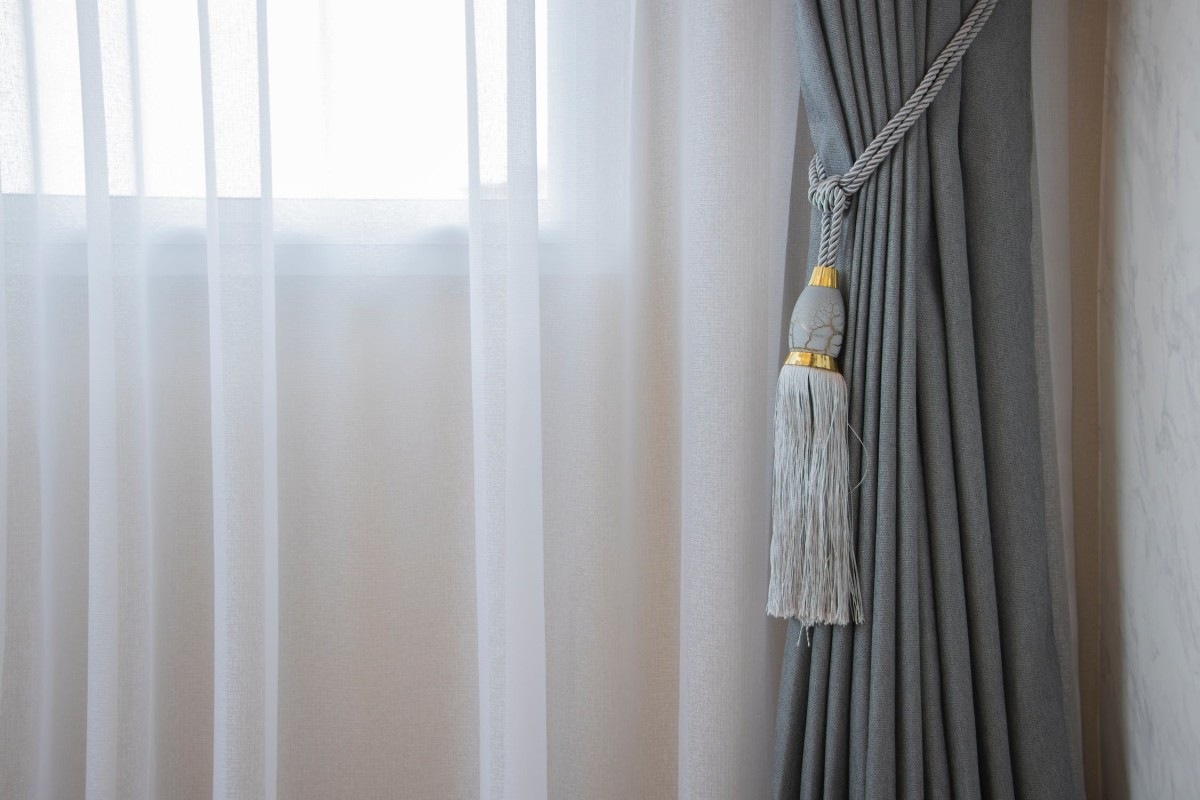


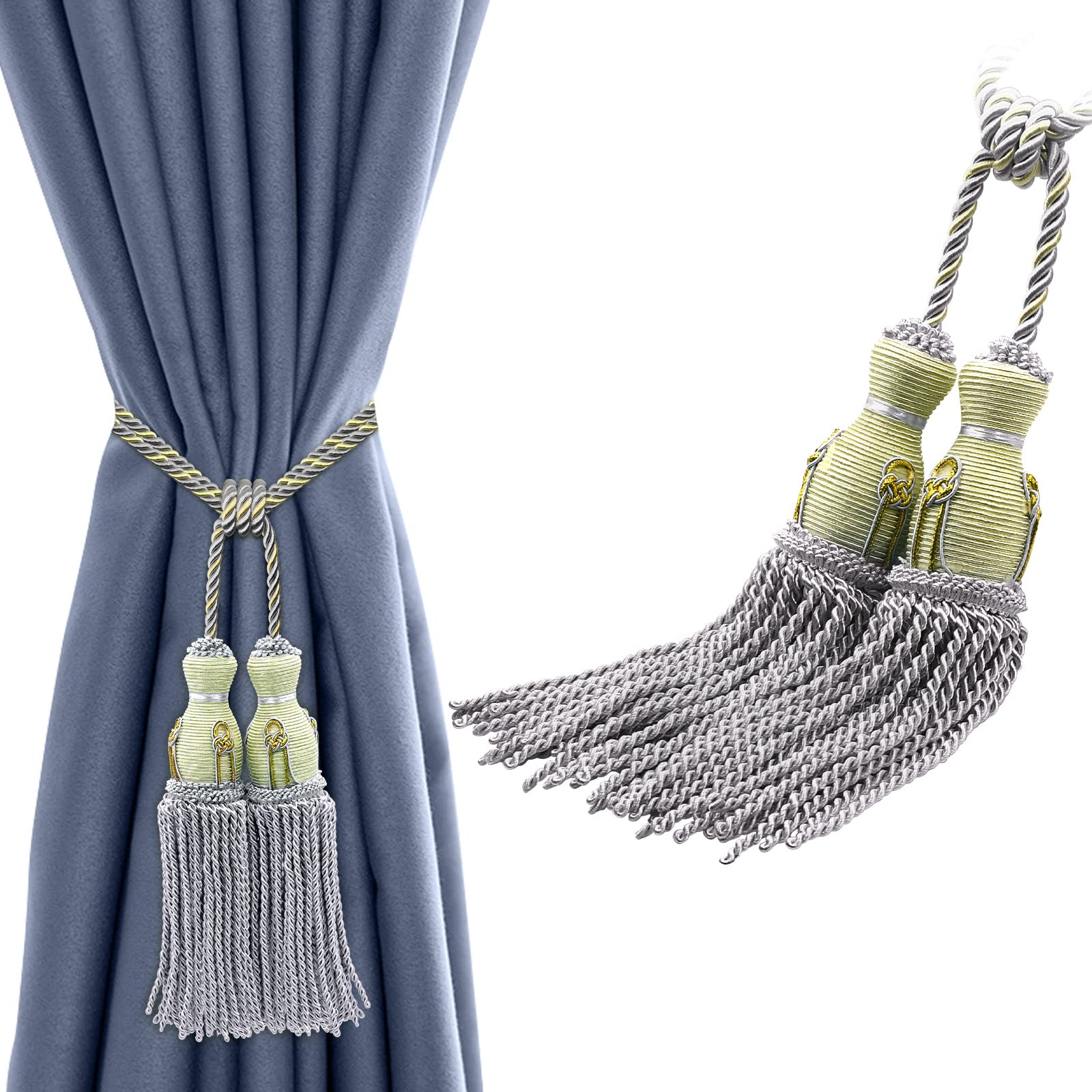
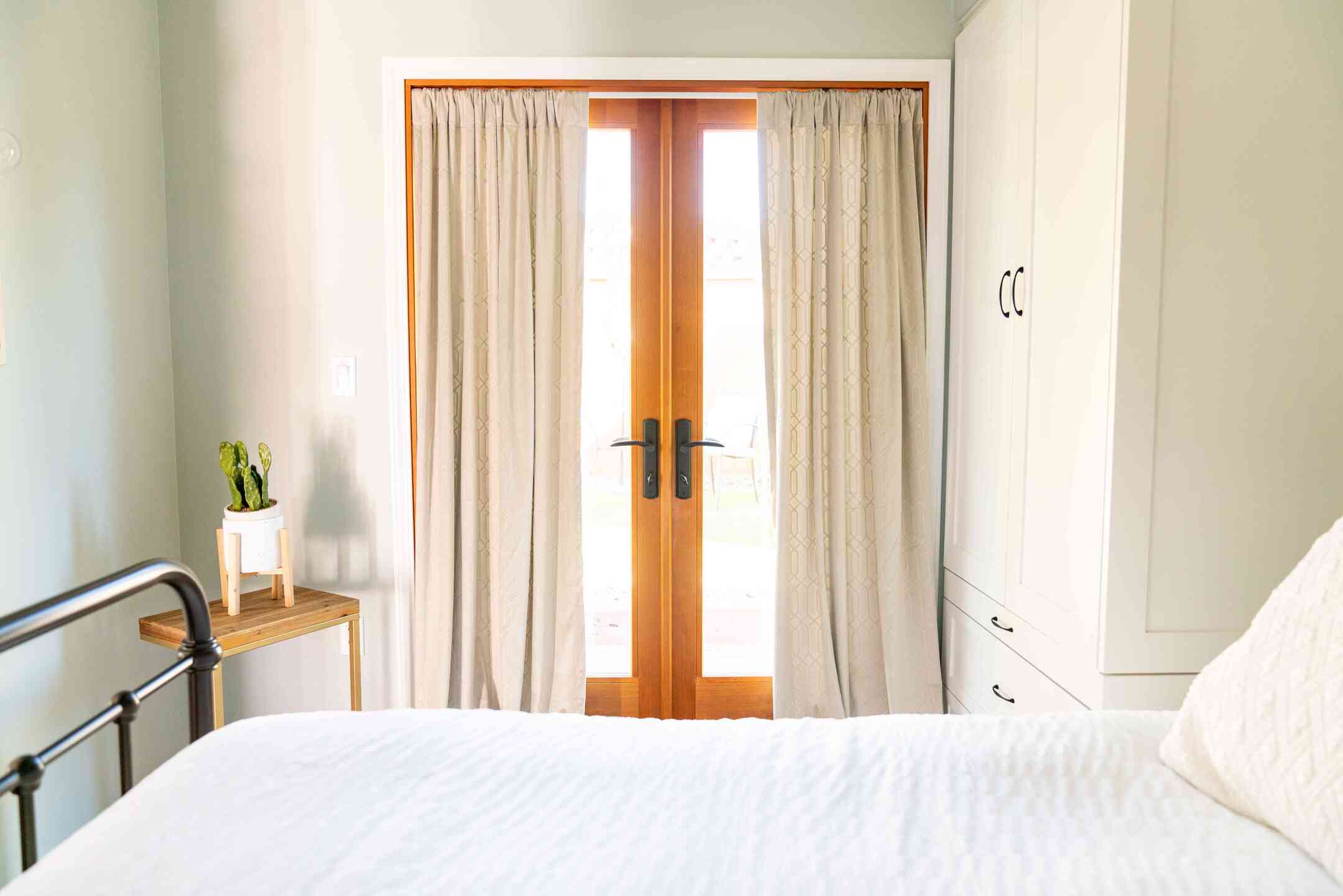
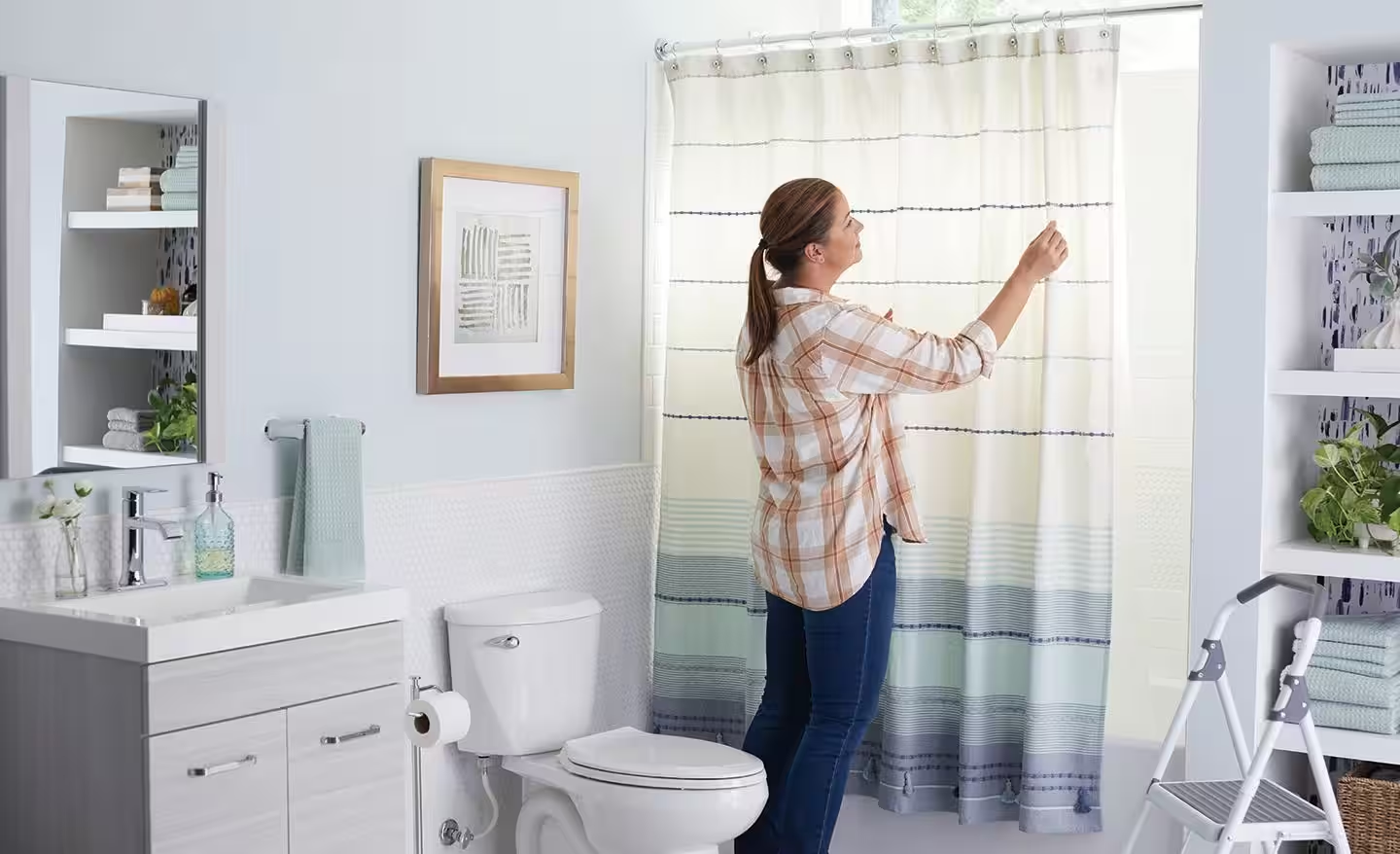
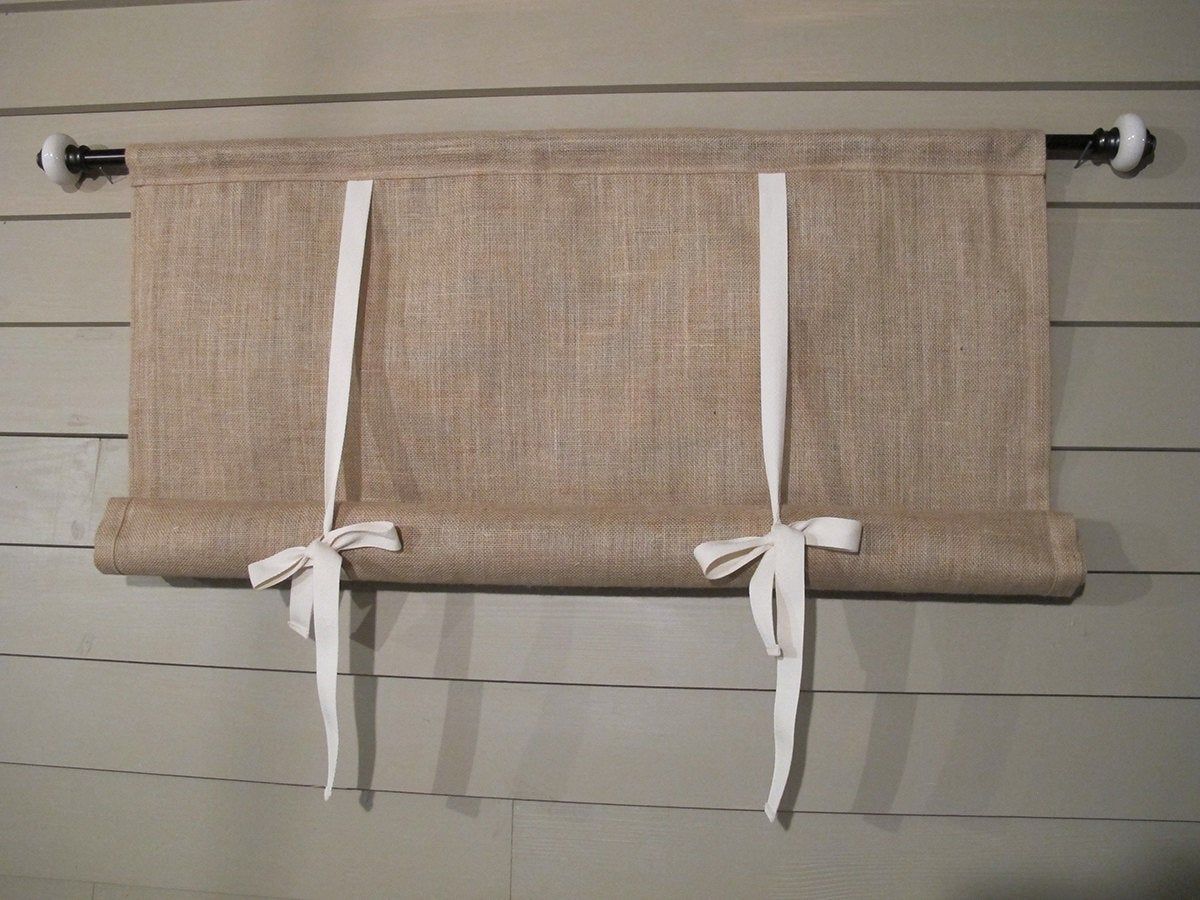

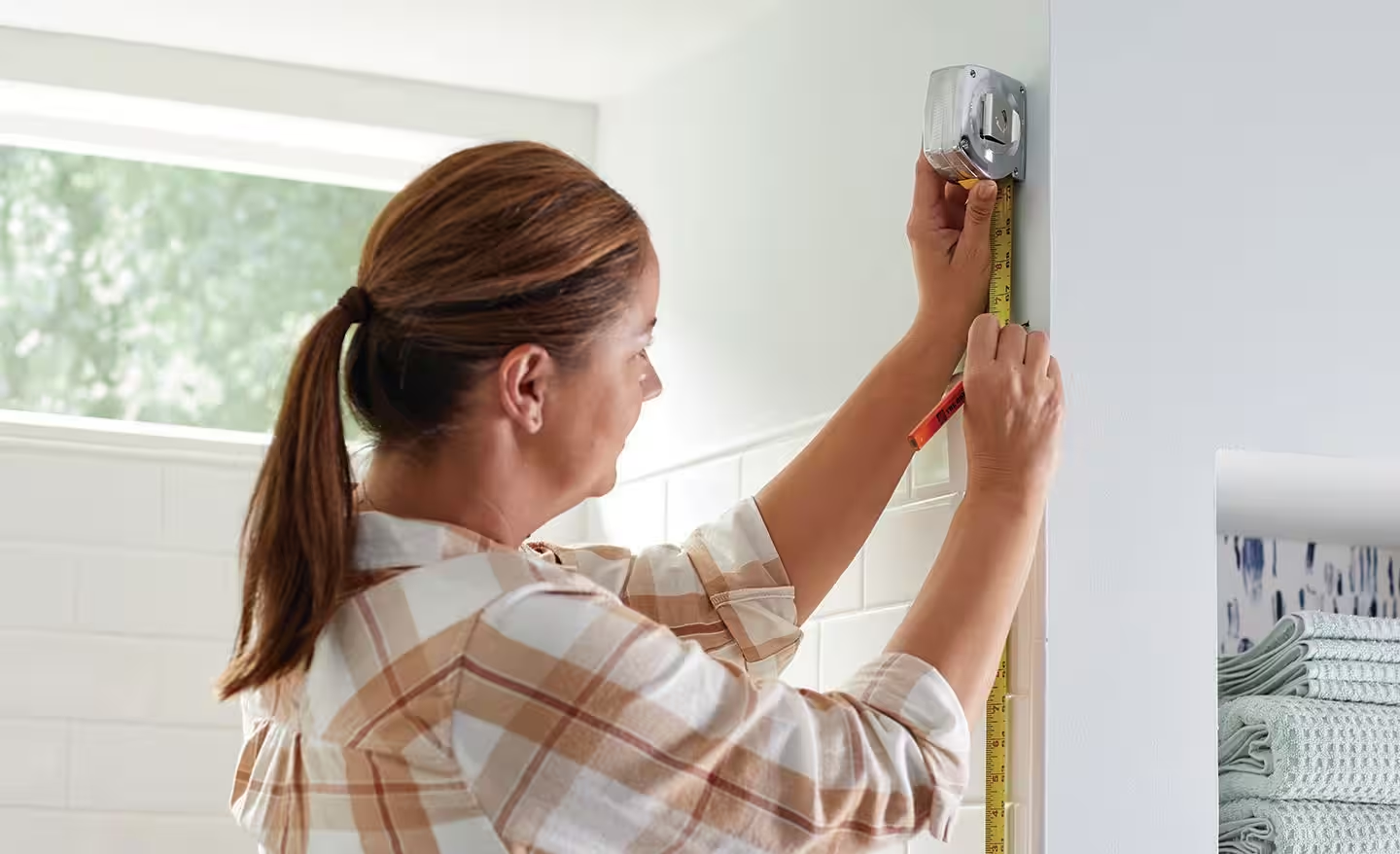
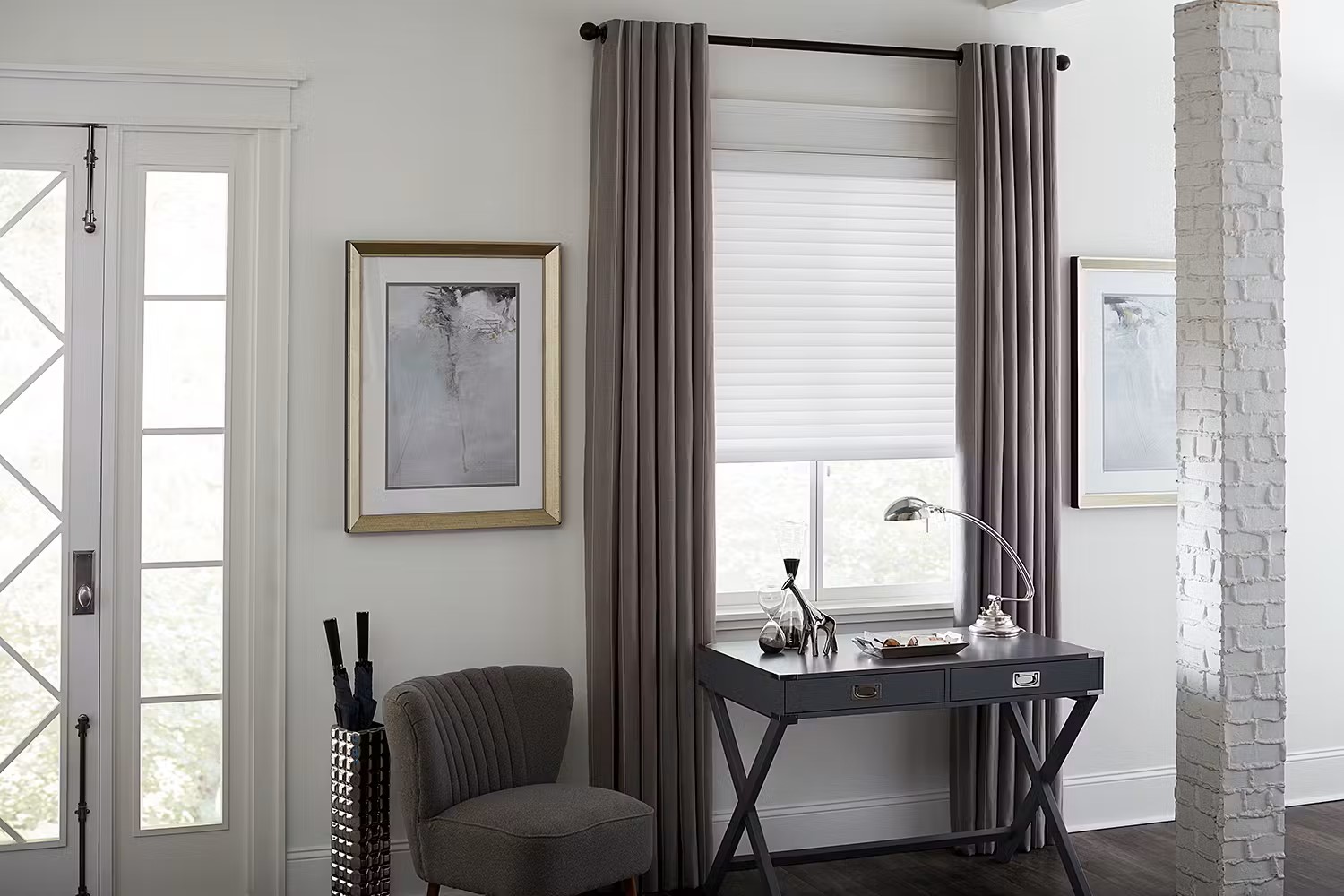
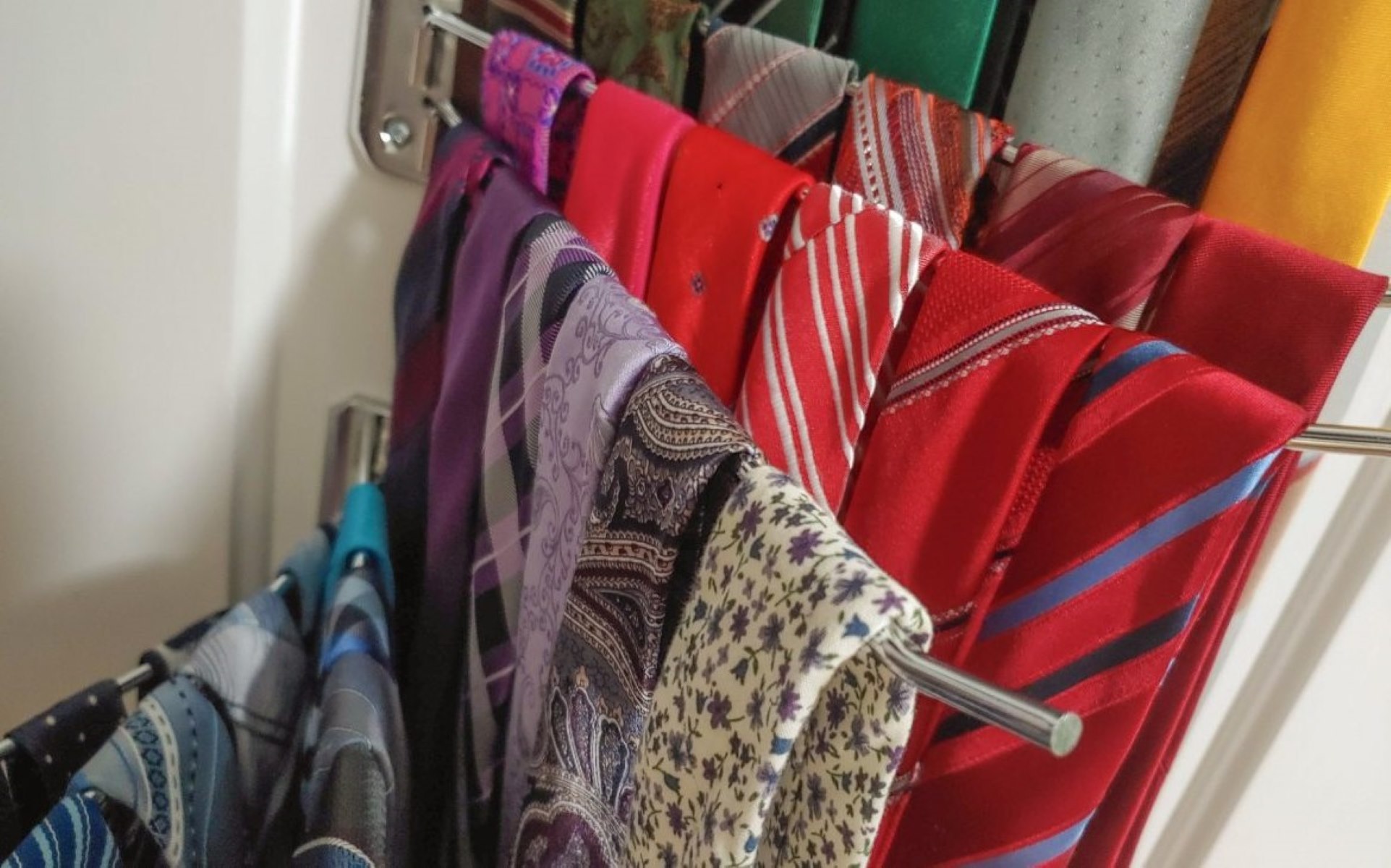
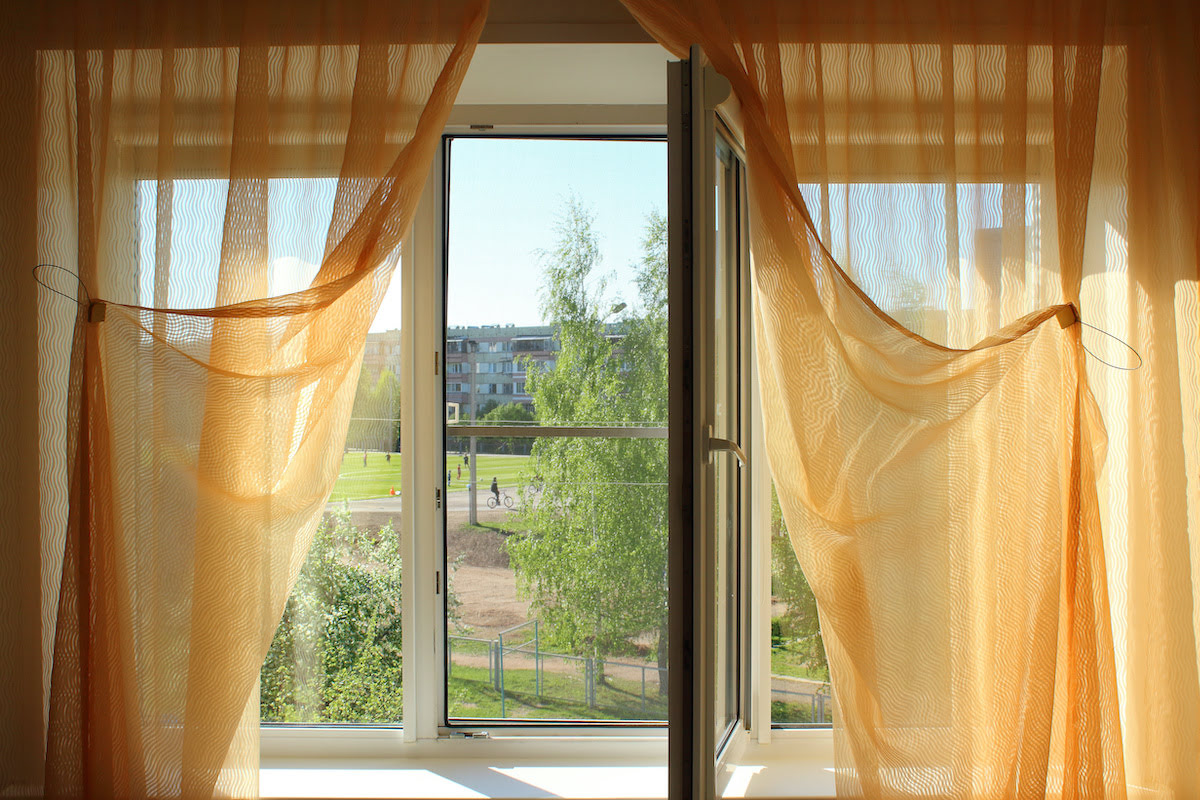
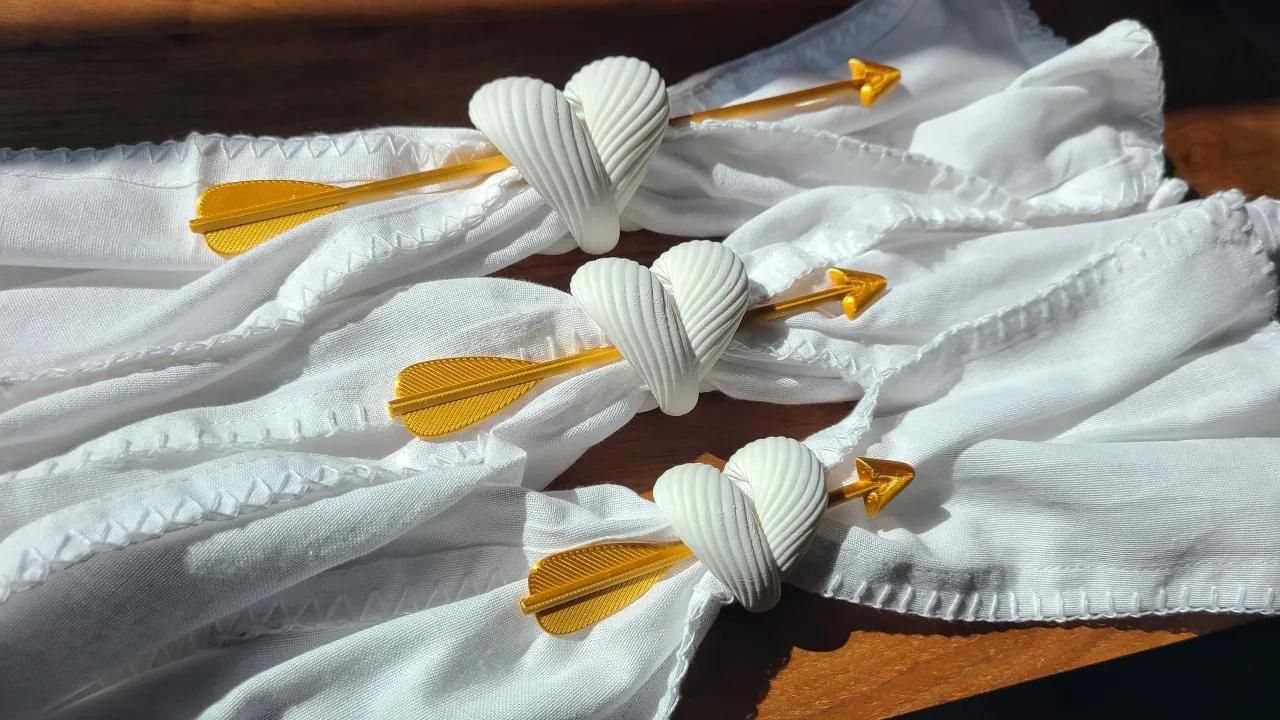

0 thoughts on “How To Tie Up Curtains”